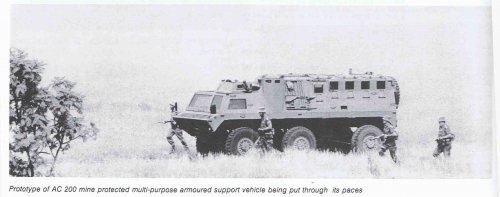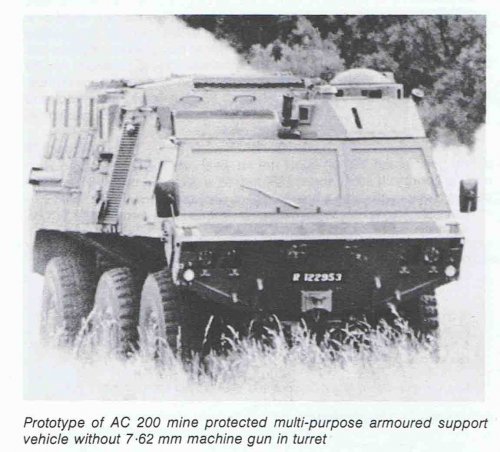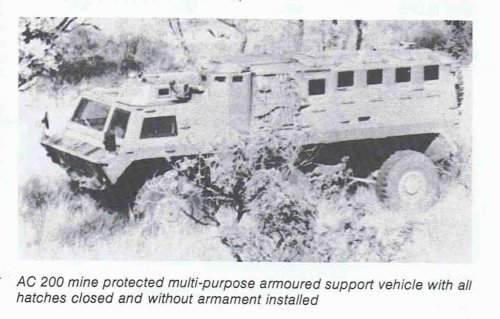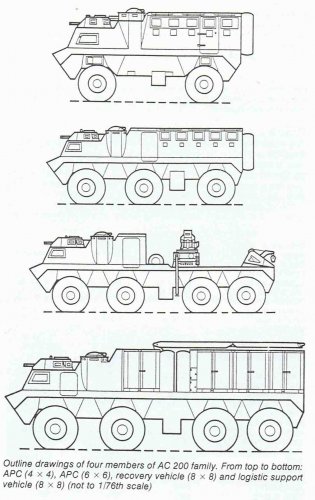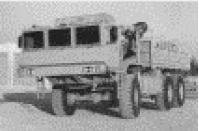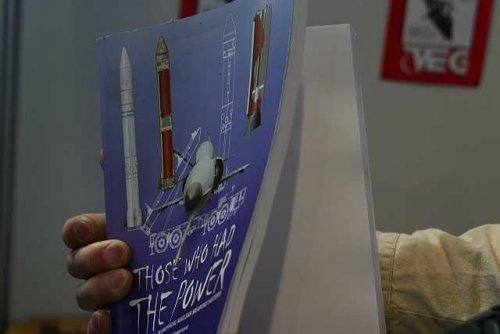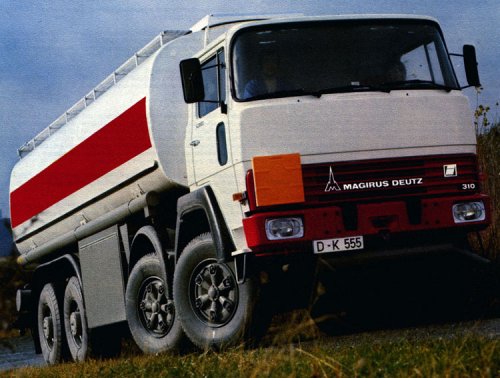The next vehicle is an enigma as far as I'm concerned.
It is what has been described as the Mechem Krokodil, and is a 6x6 mineprotected vehicle. I have seen a person describe it as a support vehicle (ammo?observation?command?) for the G6 SP howitzer, but I'm not so sure. It appears too low-roofed for these roles? It obviously is closely related to the 8x8 vehicle next to it in the first picture, called the Mechem Gator, which appears to be an infantry combat vehicle. This Krokodil seems to have space, or an opening in the middle of the vehicle for a turret or mortar, no firing ports, but armoured vision ports at the back of the vehicle .... truly interesting.
Of course, it could also be a proof-of-concept vehicle.


